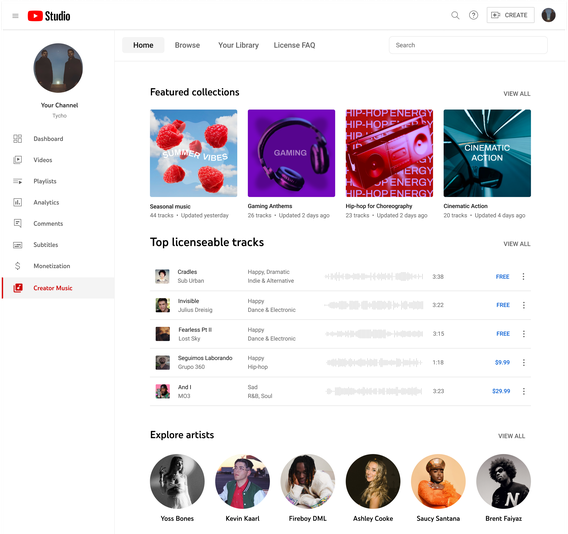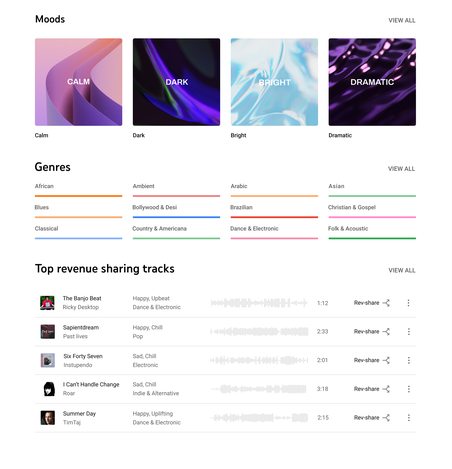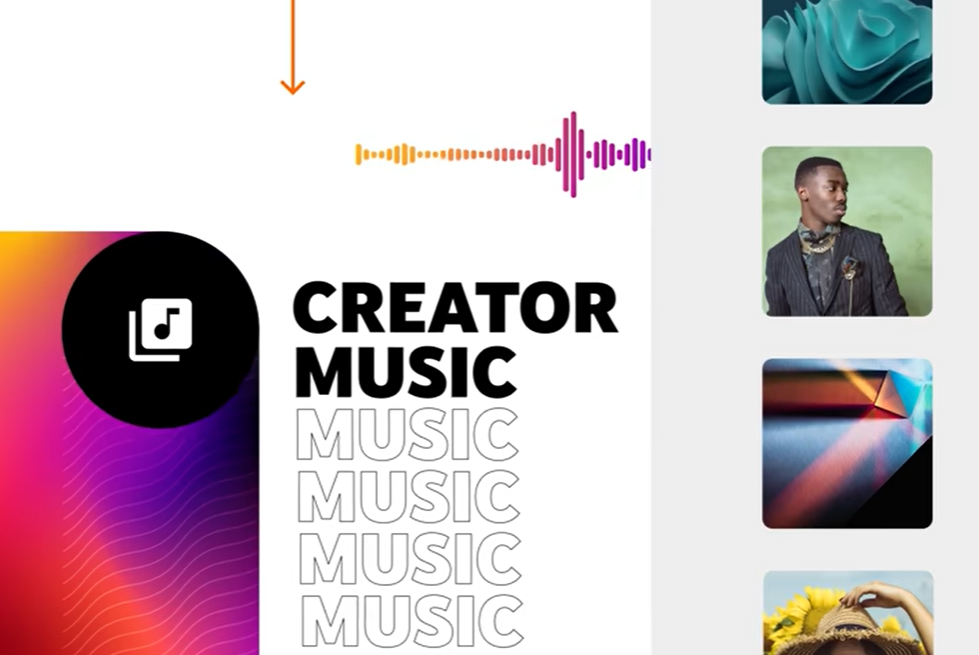YouTube’s Creator Music lets creators use copyright protected music in videos while keeping revenue
YouTube has finally expanded their “partnership with the music industry,” letting creators use music on YouTube and keep a portion of licensed music revenue.
With Creator Music, creators who use music on YouTube in their long form videos will be able to easily browse a catalogue full of songs they can buy to use – or choose a revenue-sharing option so artists benefit.
The changes simplify things for YouTube Partner Programme creators on YouTube in a huge way, and put YouTube ahead of rivals in the music licensing world. Before Creator Music, pop music had been out of bounds for many YouTube creators.
Smaller creators wondering how to use copyrighted music on YouTube, who don’t have the contacts or budget to license copyright-protected music, are usually stuck with two less-than-ideal options when including music in their videos: royalty-free music that lets them keep all of the revenue generated, but use music from unrecognised artists, or copyright-protected music from higher profile artists, but all of the revenue goes to the music rightsholder.
Creator Music will open up a library of popular music that is bound to rival that of TikTok, YouTube’s competitor. On top of this, creators will still collect revenue from advertising.
Creator Music is in beta and only due to be made available in the US when it launches later this year. YouTube says its testing on a smaller group to begin with, and further expansion will come in 2023. It plans on “offering a wide range of licensing price points and usage options.”
Closer to the launch of Creator Music, at RouteNote we’ll be working with artists to ensure they are paid fairly for their music on monetised videos – so watch this space.
How to use tracks from Creator Music in your YouTube content

YPP creators can find Creator Music in YouTube Studio.
There you can search for tracks, preview them, and download them to use in videos. Songs will have two different usage options for monetisation.
You can choose to buy a license upfront, which means paying a fee so you can then use the music. You’ll also earn the same from ad revenue as you would if you hadn’t put any music over your video.
The second option is revenue share, which lets creators share a fixed portion of advertising revenue with the artist and rightsholders connected to the track.
If there’s no usage option available, and you still pick the track to use in your video, you might end up with a copyright takedown or Content ID claim on your video.

Creator Music news comes at the same time as YouTube announcing Shorts monetisation expansions and lowering the threshold for joining the YouTube Partner Programme, and expanding it to include Shorts creators.
Creator Music is a way for YouTube to square up to TikTok, offering more tempting monetisation options for creators. It also challenges TikTok by giving creators a music library to rival TikTok’s The changes were first mentioned in July 2022, when Google’s updated “YouTube test features and experiments” support article and video hinted that the video platform are to implement a similar system in the near future.
The launch announcement, made in YouTube’s Made on YouTube event, is a few months after Meta announced Music Revenue Sharing on Facebook. Facebook’s Music Revenue Sharing hopes to strike a balance, allowing creators to use copyrighted music while keeping 20% of the revenue.
As with Facebook’s Music Revenue Sharing, Creator Music could be seen as controversial from the artist’s point of view, with essentially less revenue going to the artist, but I think it makes sense given the direction of the music streaming industry.
That’s as long as artists have control of which tracks are included and know exactly how much percentage they are giving up in exchange for the increased exposure. It’s also worth noting that creators’ content must also hit certain standards on Facebook’s Music Revenue Sharing, including that the audio must not be the primary purpose of the video.
These moves from YouTube and Facebook will undoubtedly be noticed by other video platforms like TikTok, and will surely shake up the sync industry, forcing companies to adapt in order to stay relevant against some of the biggest players in tech.
No word on the catalogue size, or the percentage split yet, as YouTube continue to build and test the Creator Music feature. Google says there will be more news in the coming months.
